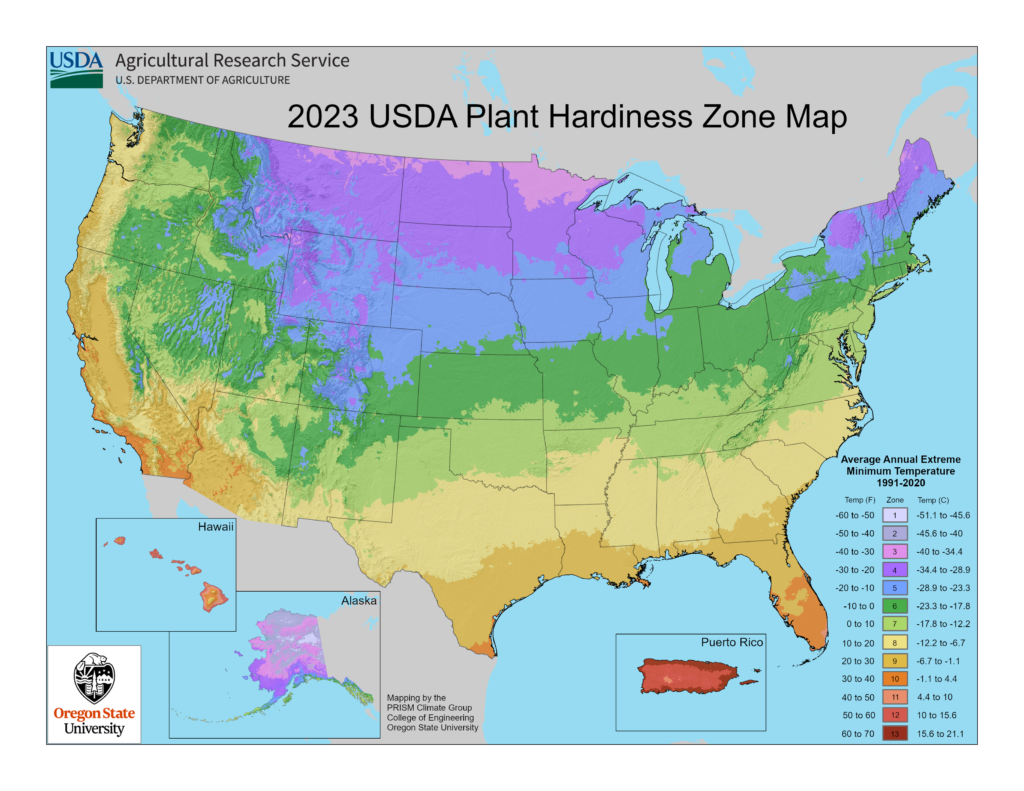Introduction:
North America boasts a vast range of climates, from the Arctic tundra to the tropical regions. This diversity creates a rich tapestry of gardening possibilities, but it also necessitates a tailored approach to planting. Understanding your specific planting zones and adhering to a well-planned schedule are crucial for a successful and bountiful garden. This guide will walk you through the key aspects of gardening across all North American climates, providing practical advice on what to plant and when, with specific city examples to guide your planning.
Understanding Planting Zones:
The USDA Plant Hardiness Zone Map (for the US) and the Natural Resources Canada Plant Hardiness Zones map (for Canada) are essential tools for any gardener. These maps divide North America into zones based on average minimum winter temperatures, indicating which plants are likely to survive in a given area.
- Canadian Zones: Range from 0a (extremely cold) to 9a (mild).
- USDA Zones: Range from 1a (extremely cold) to 13b (very hot).
- https://planthardiness.ars.usda.gov/

Here’s a broader overview with city examples:
- Very Cold Zones (1-3):
- Zone 1: Extremely harsh, limited gardening. Examples: Resolute, NU (Canada), high-altitude Alaskan locations.
- Zone 2: Very short growing seasons, hardy plants only. Examples: Yellowknife, NT (Canada), Fairbanks, AK (US).
- Zone 3: Short growing seasons, careful planning needed. Examples: Edmonton, AB (Canada), International Falls, MN (US).
- Cold Zones (4-5):
- Zone 4: Shorter growing seasons, but offers a wider range of options. Examples: Calgary, AB (Canada), Minneapolis, MN (US).
- Zone 5: Moderate cold, longer growing season than zones 1-4. Examples: Toronto, ON (Canada), Denver, CO (US).
- Temperate Zones (6-7):
- Zone 6: Moderate climate, diverse planting. Examples: Montreal, QC (Canada), St. Louis, MO (US).
- Zone 7: Mild winters, longer growing season. Examples: Washington, D.C. (US), Nashville, TN (US).
- Warm Zones (8-9):
- Zone 8: Long growing season, mild winters. Examples: Atlanta, GA (US), Dallas, TX (US).
- Zone 9: Very mild winters, suitable for many warm-season crops. Examples: Orlando, FL (US), Los Angeles, CA (US).
- Hot Zones (10-13):
- Zone 10: Subtropical climate, year-round growing. Examples: Miami, FL (US), San Diego, CA (US).
- Zone 11-13: Tropical, high heat and humidity. Examples: Honolulu, HI (US), parts of Puerto Rico.
Key Gardening Considerations Across North American Climates:
- Frost Dates: Crucial for determining planting times, especially in colder zones.
- Heat Tolerance: Essential in warmer zones, where plants need to withstand high temperatures.
- Water Availability: Varies significantly across regions, impacting plant selection and watering practices.
- Soil Type: Influences nutrient availability and drainage, requiring appropriate soil amendments.
- Sunlight: Varies with latitude and season, affecting plant growth.
Planting Zones Schedule (Generalized):
Very Cold Panting Zones (1-3):
- Focus on extremely cold-hardy vegetables and flowers.
- Extensive seed starting indoors is essential.
- Utilize cold frames and row covers to extend the growing season.
- Examples: Arctic poppy, hardy greens, root vegetables.
Cold Planting Zones (4-5):
- Start seeds indoors for warm-season crops.
- Direct sow cold-hardy vegetables and flowers.
- Choose short-season varieties to maximize yield.
- Examples: Peas, spinach, tomatoes (early varieties), hardy perennials.
Temperate Planting Zones (6-7):
- Longer growing seasons allow for a wider variety of plants.
- Succession planting is effective for continuous harvests.
- Consider heat-tolerant varieties for summer months.
- Examples: Beans, corn, peppers, roses, herbs.
Warm Planting Zones (8-9):
- Mild winters allow for year-round gardening in some areas.
- Focus on heat-loving crops and tropical plants.
- Provide shade and adequate watering during hot periods.
- Examples: Citrus, avocados, okra, hibiscus.
Hot Planting Zones (10-13):
- Tropical and subtropical climates with high humidity and heat.
- Select plants adapted to these conditions.
- Consider growing tropical fruits and flowers.
- Examples: Mangoes, orchids, palms, pineapples.
Recommended Plants Across North American Climates:
- Vegetables:
- Cold-hardy: Kale, spinach, carrots, beets.
- Temperate: Tomatoes, peppers, beans, corn.
- Warm: Eggplant, okra, sweet potatoes.
- Tropical: Cassava, taro, yams.
- Fruits:
- Cold-hardy: Strawberries, raspberries, apples.
- Temperate: Peaches, plums, grapes.
- Warm: Citrus, figs, pomegranates.
- Tropical: Mangoes, bananas, pineapples.
- Flowers:
- Cold-hardy: Tulips, daffodils, pansies.
- Temperate: Roses, petunias, sunflowers.
- Warm: Hibiscus, bougainvillea, lantana.
- Tropical: Orchids, bird of paradise, heliconia.
- Herbs:
- Cold-hardy: Chives, parsley, thyme.
- Temperate: Basil, oregano, rosemary.
- Warm: Lemongrass, ginger, turmeric.
Seed Starting and Gardening Tips:
- Always check your local frost dates.
- Amend soil with organic matter to improve fertility and drainage.
- Water deeply and regularly, especially during dry periods.
- Mulch to retain moisture and suppress weeds.
- Choose plants suited to your specific climate and soil conditions.
- Consult local nurseries and extension offices for regional information.
https://www.seedsnow.com/?rfsn=8473251.66795e7&utm_source=refersion&utm_medium=affiliate&utm_campaign=8473251.66795e7 – Get High Quality Organic Seeds
Conclusion:
Gardening across North America’s diverse climates is a rewarding experience. By understanding your planting zone, adapting to local conditions, and selecting appropriate plants, you can create a thriving garden. Whether you’re growing cold-hardy vegetables in the north or tropical fruits in the south, careful planning and attention to detail will lead to a bountiful harvest.
